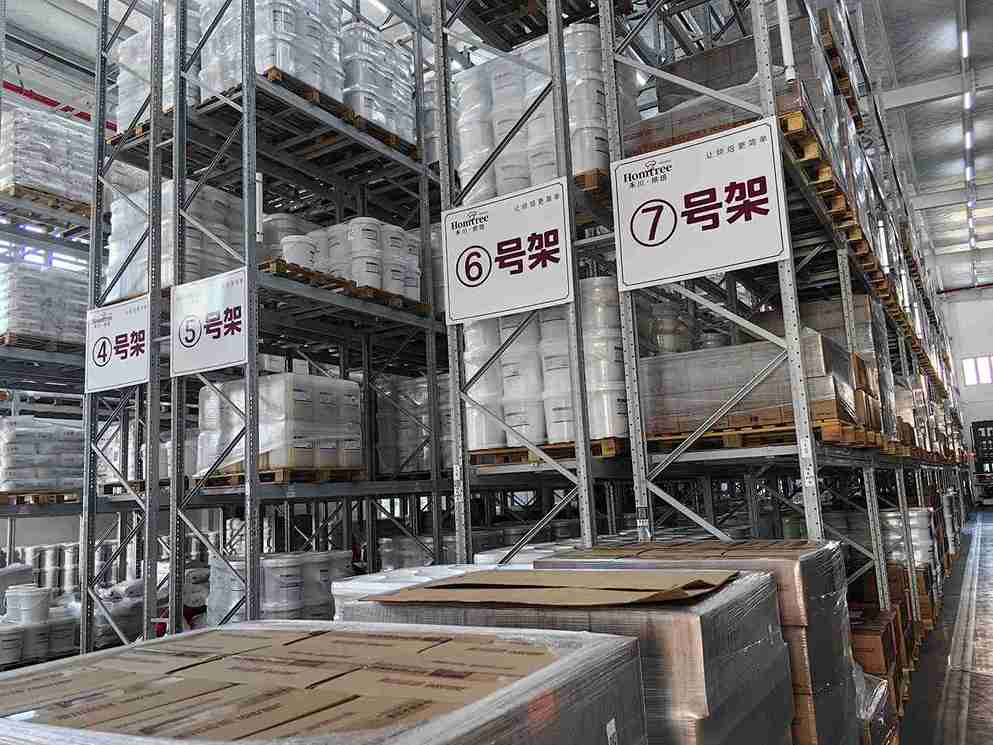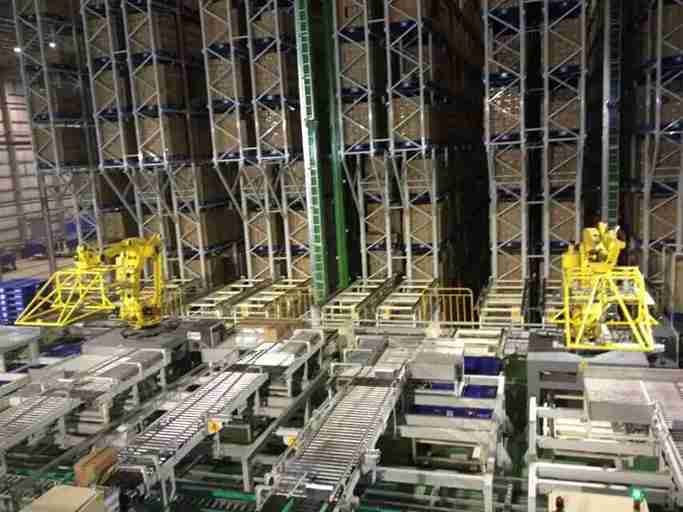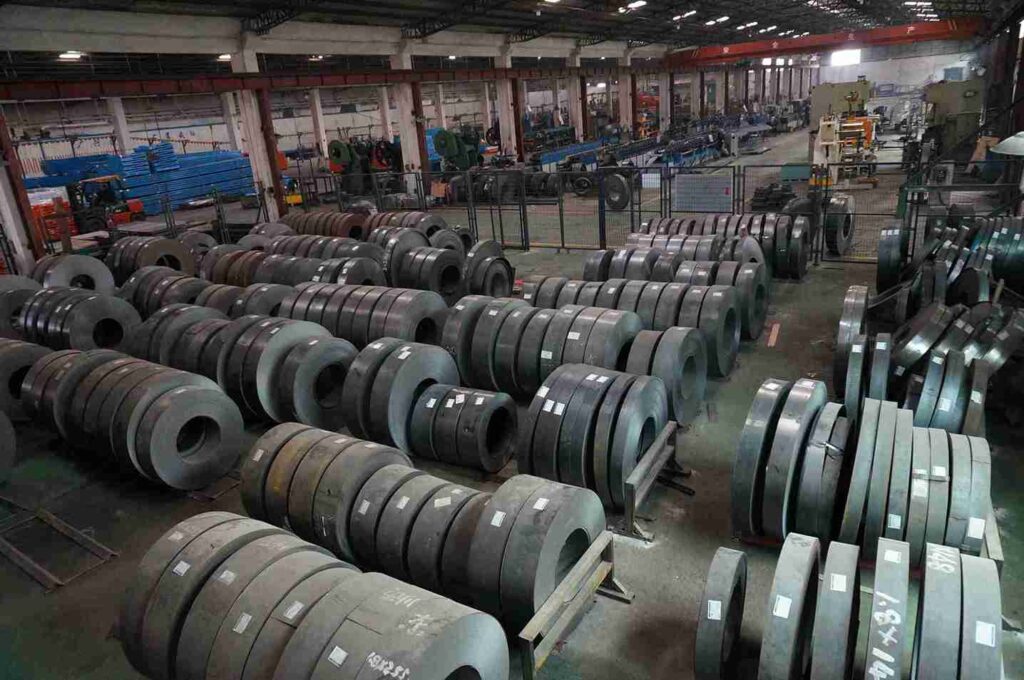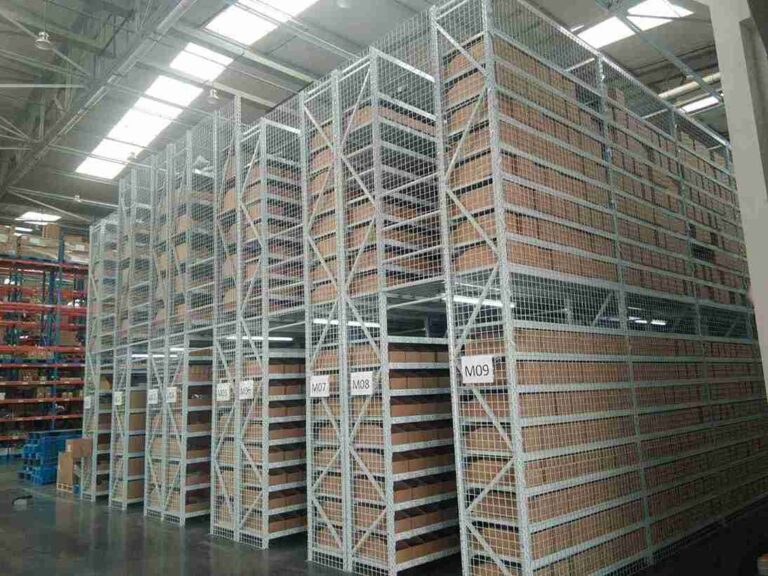📐 "First 50 Enterprise Queries Get Custom 3D Warehouse Design" Plan

Maximizing Efficiency: The Strategic Imperative of Narrow Aisle Racking in Automotive Logistics
Abstract: For automotive supply chain and warehouse managers globally, the pressure to achieve operational excellence is relentless. The specific application of narrow aisle racking in automotive warehousing has emerged as a critical, non-negotiable solution for companies seeking a decisive competitive edge. This definitive resource explores the multifaceted role of narrow aisle racking in automotive parts distribution and production support, detailing how this system directly addresses the unique challenges of storing engine components, body panels, and fragile electronics.
By delving into advanced integration with automated guided vehicles (AGVs), sophisticated warehouse management software (WMS) protocols, and regional implementation strategies, this guide provides a comprehensive blueprint. The aim is to demonstrate how a meticulously planned narrow aisle racking in automotive environment is not merely a storage choice but a transformative investment in speed, density, and accuracy, directly impacting bottom-line profitability and market responsiveness.

The Unforgiving Landscape of Modern Automotive Warehousing
The automotive supply chain is a complex, high-velocity ecosystem where inefficiencies have immediate and costly consequences. Warehouses are no longer static repositories; they are dynamic hubs where the flow of thousands of unique components—from heavy drivetrain assemblies to delicate sensor clusters—must be perfectly synchronized with production lines and aftermarket demand. Legacy storage methods, such as wide-aisle selective racking, are fundamentally mismatched to these modern requirements.
They consume valuable square footage with redundant travel paths, create bottlenecks during peak picking cycles, and limit vertical storage potential. The operational costs associated with underutilized space, excessive labor travel time, and picking inaccuracies erode margins in an industry where they are already razor-thin. This landscape creates a compelling case for a structural rethink, positioning narrow aisle racking in automotive logistics as the foundational upgrade for any facility aiming to thrive. The shift towards this system represents a move from reactive storage to proactive, intelligent inventory management tailored for the sector’s punishing demands.
Deconstructing the Cost of Inefficiency in Parts Storage
To understand the value proposition of narrow aisle racking in automotive settings, one must first quantify the hidden costs of traditional layouts. In a standard setup with aisles wide enough for counterbalance forklifts to turn, upwards of 50% of the total facility footprint is dedicated solely to access lanes. This is an extraordinary allocation of costly industrial real estate to non-revenue-generating space. Furthermore, the travel distance for order pickers or forklift operators between picks is dramatically increased.
Studies in automotive parts distribution centers have shown that personnel spend more than half of their shift simply driving to and from locations, rather than engaging in value-added tasks like loading or unloading. This travel time translates directly into labor cost inflation and reduced throughput capacity. For fast-moving components like filters, brake pads, or common fasteners, these delays can ripple outwards, causing missed shipment windows and potential line-side shortages at assembly plants. The implementation of narrow aisle racking in automotive warehouses attacks this problem at its root by collapsing aisle width, thereby condensing the storage grid and bringing pick faces significantly closer together.

Engineering Excellence: The Core Design Principles of Automotive-Grade Narrow Aisle Systems
Not all racking is created equal, and the demanding environment of an automotive components warehouse necessitates a system engineered for exceptional performance. The successful deployment of narrow aisle racking in automotive applications rests on several pillars of design and specification that go beyond catalog standards.
Structural Integrity and Load Dynamics for Heavy Components
Automotive loads present unique challenges: immense point weights from engine blocks or transmission casings, uneven weight distribution from molded bumpers, and the dynamic forces imparted during storage and retrieval. A racking system designed for general merchandise is insufficient. The structural calculus for narrow aisle racking in automotive facilities must account for these factors with a significant safety margin. Upright frames are specified with heavier gauge steel and often feature reinforced column profiles.
Beam connections utilize patented locking mechanisms that exceed standard teardrop designs, ensuring a positive mechanical lock that cannot be accidentally dislodged by equipment impact or vibration. Load beams themselves are rated not just for static capacity, but for the dynamic loads incurred when a fully laden pallet is placed into the system by a turret truck. This rigorous engineering ensures the long-term integrity and safety of the storage structure, which is paramount when storing high-value automotive inventory.
The Symbiotic Relationship with Specialized Handling Equipment
The racking and the material handling equipment form an inseparable, co-dependent system. The defining characteristic of narrow aisle racking in automotive logistics is its reliance on purpose-built vehicles. Turret trucks and sideloaders, which operate within the aisle width, are the standard for full-pallet movements. For case picking, articulated or man-up narrow aisle order pickers are employed. The racking design is precisely calibrated to the operational envelope of this equipment—the aisle width is optimized to the millimeter based on the truck’s turning radius and load dimensions, while the rack heights are determined by the mast elevation capabilities.
This synergy is what unlocks the dramatic space savings. Furthermore, the integration of guidance technologies, such as wire, optical, or inertial systems, allows these vehicles to operate with pinpoint accuracy at elevated speeds within the tight confines of the aisle, maximizing both safety and throughput. This equipment-racking partnership is the true engine of efficiency in a modern automotive parts warehouse.

Strategic Workflow Integration: From Receiving to Dispatch
The benefits of narrow aisle racking in automotive storage are fully realized only when the system is thoughtfully integrated into the entire warehouse workflow. A siloed approach, where the racking is seen as an isolated component, will yield suboptimal results.
Optimizing the Put-Away and Picking Processes
A Warehouse Management System (WMS) with logic tailored for high-density storage is the central nervous system. Upon receipt of a pallet of cylinder heads or wiring harnesses, the WMS doesn’t just assign a random location. It uses algorithms based on velocity (ABC classification), part dimensions, and weight to determine the ideal position within the narrow aisle racking in automotive grid. Fast-moving items are positioned in the “golden zone”—waist-to-eye level for pickers—to minimize reach and travel time.
Slower-moving, bulky items may be directed to higher or lower storage levels. During picking, the system can generate wave picks or batch picks that consolidate orders to minimize travel within the dense storage arena. For operations using man-up order pickers, integrating pick-to-light or voice-directed technology within the aisles can boost pick rates by over 35% while drastically reducing errors—a critical factor for expensive automotive components.
Creating a Seamless Interface with Automation
The logical evolution of a high-density narrow aisle racking in automotive setup is integration with broader automation. This creates a continuous, high-speed flow of materials. Automated Guided Vehicles (AGVs) can be deployed to transport pallets from the receiving docks to the entry points of the narrow aisle storage blocks. From there, automated turret trucks or storage/retrieval machines (SRMs) can take over, entering the aisles autonomously to perform put-away and retrieval tasks commanded by the WMS.
The pallets are then delivered to pick stations or dispatch staging areas by AGVs or conveyor systems. In this model, the narrow aisle racking in automotive structure becomes the fixed, high-density backbone of a flexible, automated material handling system. This level of integration is particularly compelling for facilities supporting just-in-time (JIT) or just-in-sequence (JIS) manufacturing, where punctuality and precision are absolute.

Tailoring the Solution: Application Across Automotive Part Categories
The versatility of narrow aisle racking in automotive logistics is demonstrated in its adaptation to diverse product categories, each with its own handling and storage requirements.
Storage Solutions for Bulky, Heavy-Duty Assemblies
For items like complete axle assemblies, stamped body sides, or crated engines, standard pallet racking may be adequate but inefficient. Narrow aisle racking in automotive applications for these goods often utilizes double-deep configurations, where two pallets are stored back-to-back in a single lane. This nearly doubles storage density for these items while still maintaining good accessibility with reach trucks or double-deep turret trucks. The racking is engineered with especially robust beams and uprights to handle the extreme weights, and load-back panels may be used to prevent pallets from being pushed too far into the lane.
High-Velocity Storage for Aftermarket and Fast-Moving Parts
The distribution of brake rotors, oil filters, and shock absorbers to dealerships and retailers requires rapid order turnaround. Here, narrow aisle racking in automotive warehouses is frequently paired with dynamic storage solutions within the same aisle. Pallet flow racks can be installed at the ground level for high-throughput, first-in-first-out (FIFO) picking, while the upper levels of the same narrow aisle structure hold reserve pallets. This hybrid approach creates a highly compact, fast-picking zone that minimizes walk time and maximizes productivity for warehouse associates fulfilling aftermarket orders.
Overcoming Implementation Challenges in Global Growth Markets
Deploying advanced narrow aisle racking in automotive systems in regions like Southeast Asia, the Middle East, Africa, or Latin America requires a nuanced approach that respects local conditions.
Adapting to Infrastructure and Environmental Realities
A successful project begins with a thorough site assessment. Floor flatness is non-negotiable; operating sensitive turret trucks in aisles under 2 meters wide requires a floor tolerance often stricter than local construction norms. Partnering with a provider who can manage floor grinding and leveling as part of the project is crucial. In coastal or high-humidity regions, specifying hot-dip galvanized or powder-coated racking protects against corrosion, extending the system’s lifespan. In markets with less stable electrical grids, automation components require surge protection and uninterruptible power supply (UPS) considerations to safeguard control systems and data integrity.
Building Local Expertise for Sustainable Operations
The long-term success of a narrow aisle racking in automotive installation hinges on local operational competence. A superior provider offers comprehensive, hands-on training programs for forklift operators and maintenance technicians, conducted in the local language. This knowledge transfer ensures safe operation, maximizes equipment utilization, and empowers local teams to perform routine maintenance and troubleshooting. This commitment to building in-country expertise turns a capital investment into a sustainably productive asset, a key consideration for multinational corporations establishing regional hubs.
The Tangible Return on Investment: A Data-Driven Justification
The decision to invest in narrow aisle racking in automotive logistics is ultimately a financial one, justified by a compelling return on investment (ROI). The calculations are multi-faceted and powerful.
Quantifying Gains in Storage Density and Operational Throughput
The most direct benefit is the dramatic increase in storage capacity within the same building envelope. By reducing aisle width from 3.5 meters to 1.6 meters, a facility can typically add 30-50% more pallet positions. This directly defers or eliminates the need for costly facility expansion or off-site storage. On the throughput side, the condensation of the storage grid reduces average travel distance per pick by a comparable percentage. When combined with technology like pick-to-light, facilities routinely report productivity increases of 25-40% in their picking operations. For an automotive parts distributor, this could mean fulfilling the same daily order volume with fewer labor hours or increasing order volume without adding staff.
Calculating the Full Financial Impact
A comprehensive ROI analysis extends beyond equipment costs. It includes:
Cost Avoidance: Capital not spent on new construction or leasing additional space.
Operational Savings: Reduced labor costs per pallet handled, lower energy costs for lighting and climate control in a smaller effective footprint, and decreased product damage due to more orderly, controlled movement.
Revenue-Enabling Benefits: The ability to handle higher order volumes, improve order accuracy leading to better customer retention, and enhance service levels to secure more business. The combined effect typically results in a payback period of 18 to 36 months, after which the system generates continuous positive cash flow.
Conclusion: Securing Competitive Advantage Through Intelligent Storage
In the relentless pursuit of efficiency that defines the global automotive industry, logistics infrastructure is a critical battlefield. The strategic implementation of narrow aisle racking in automotive warehousing and distribution represents a proven, powerful lever to pull. It systematically addresses the core challenges of space utilization, labor productivity, and inventory accuracy. More than just metal and wheels, it is a platform for digital integration, enabling a clear path towards automation and data-driven management.
For automotive companies operating in competitive markets worldwide, mastering the intricacies of their supply chain is not optional. Investing in an optimized narrow aisle racking in automotive system is a decisive step toward building a warehouse that is not a cost center, but a responsive, reliable, and potent competitive weapon—a facility engineered not just to store parts, but to drive growth.

Frequently Asked Questions (FAQs)
1. How does narrow aisle racking in automotive warehouses specifically improve inventory accuracy?
The design inherently promotes better organization. With a denser, more structured grid, each location is uniquely and clearly identifiable. When combined with a WMS that directs all put-away and picking, the opportunity for misplacement is drastically reduced. The use of guided vehicles and pick technologies within the aisles provides a second verification layer, ensuring the right product is taken from the right location. This systematic approach is far superior to the chaotic environment of a wide-aisle warehouse, leading to cycle count accuracy often exceeding 99.5%.
2. Can existing warehouses be retrofitted with narrow aisle racking, or is a new building required?
Retrofitting is a common and successful path. The key constraints are building column spacing, ceiling height, and floor condition. A professional site survey will assess if the column grid can accommodate the new, narrower aisle layout without creating obstructions. Ample clear height is needed to leverage the vertical storage advantage. Often, the existing floor requires grinding and leveling to meet the stringent flatness standards. With proper planning, most existing automotive warehouse structures can be successfully converted to a high-density narrow aisle racking in automotive configuration.
3. What are the safety considerations unique to operating a narrow aisle system with specialized trucks?
Safety is paramount. Key considerations include: stringent operator training and certification on the specific equipment, implementation of aisle access control systems (like traffic lights) to prevent two trucks from entering a single aisle, installation of robust end-of-aisle protectors and column guards, and ensuring excellent, uniform lighting throughout the storage area. Regular racking inspections to check for impact damage and beam lock integrity are also a critical part of the safety protocol for any narrow aisle racking in automotive facility.
4. How does this system handle the storage of Kanban or small-lot containers common in lean automotive manufacturing?
Narrow aisle racking in automotive systems is highly adaptable. For small parts and Kanban containers, the racking can be fitted with bin decking or wire mesh decks to create shelving within the pallet locations. Alternatively, dedicated sections of the warehouse can use carton flow racks or modular drawer systems that are integrated into the overall high-density layout. The WMS can manage these locations just as it does full pallets, creating a unified inventory system for both bulk and broken-case picking.
5. What is the lead time typically involved from design to operational handover for a project of this scale?
Lead times vary based on scope and customization but generally follow this timeline: 2-4 weeks for detailed design and simulation; 8-12 weeks for manufacturing of the custom racking and procurement of equipment; 4-8 weeks for on-site installation and commissioning (which can be phased). A total project timeline of 4 to 6 months from order to full operational handover is typical for a comprehensive narrow aisle racking in automotive warehouse transformation. This includes time for operator training and system optimization.
If you require perfect CAD drawings and quotes for warehouse racking, please contact us. We can provide you with free warehouse racking planning and design services and quotes. Our email address is: jili@geelyracks.com




